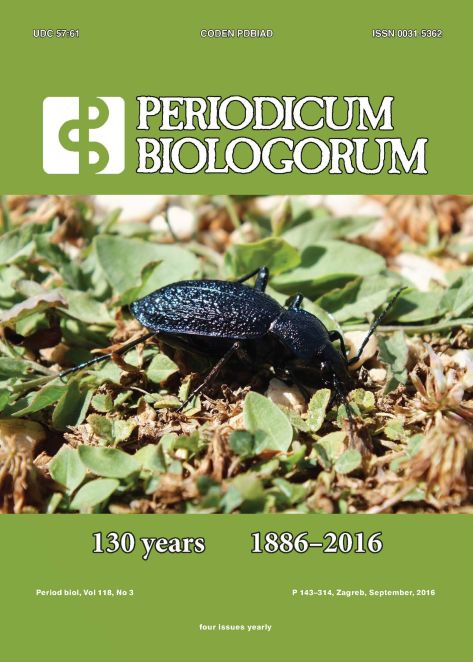Habitat preferences and demographic parameters of Nebria brevicollis (Fabricius, 1792) population in an agricultural landscape
Abstract
Background and Purpose: Nebria brevicollis is considered a forest species. The aim of this study was to analyze selected aspects of the demographic structure of N. brevicollis in a mosaic of agricultural habitats. We hypothesized that collected demographic parameter vary depending on a habitat (pine forest, cereal crops, old fallow and fresh fallow), and used this differences to identify residential and/or migrant habitats for the species.
Materials and Methods: Between 2007 and 2009, the occurrence and habitat preferences of Nebria brevicollis from four types of agricultural landscape habitats (pine forest, old fallow, fresh fallow and cereal crops) in northern Poland were studied. The material was collected by trapping in pitfall traps.
Results: A total of 621 individuals were collected. Activity analysis showed that Nebria brevicollis was present in all four habitat types. However, it was significantly more prevalent in pine forest and old fallow. All developmental stages (teneral, immature, mature and spent) were found in pine forest and old fallow. In fresh fallow and cereal crops, the age structure was disrupted and incomplete. Approximately twice more males than females were recorded in all habitats. The highest average number of eggs per female was recorded in old fallow, and the highest number of eggs produced by a single female in pine forest.
Conclusion: Based on the analyzed features of the Nebria brevicollis sampled populations, this species seems to be a constant element of pine forest and old fallow surface assemblages (preferred habitats), and a migrant element in another two studied habitats (fresh fallow and cereal crops).
Downloads
Published
Issue
Section
License
The contents of PERIODICUM BIOLOGORUM may be reproduced without permission provided that credit is given to the journal. It is the author’s responsibility to obtain permission to reproduce illustrations, tables, etc. from other publications.


